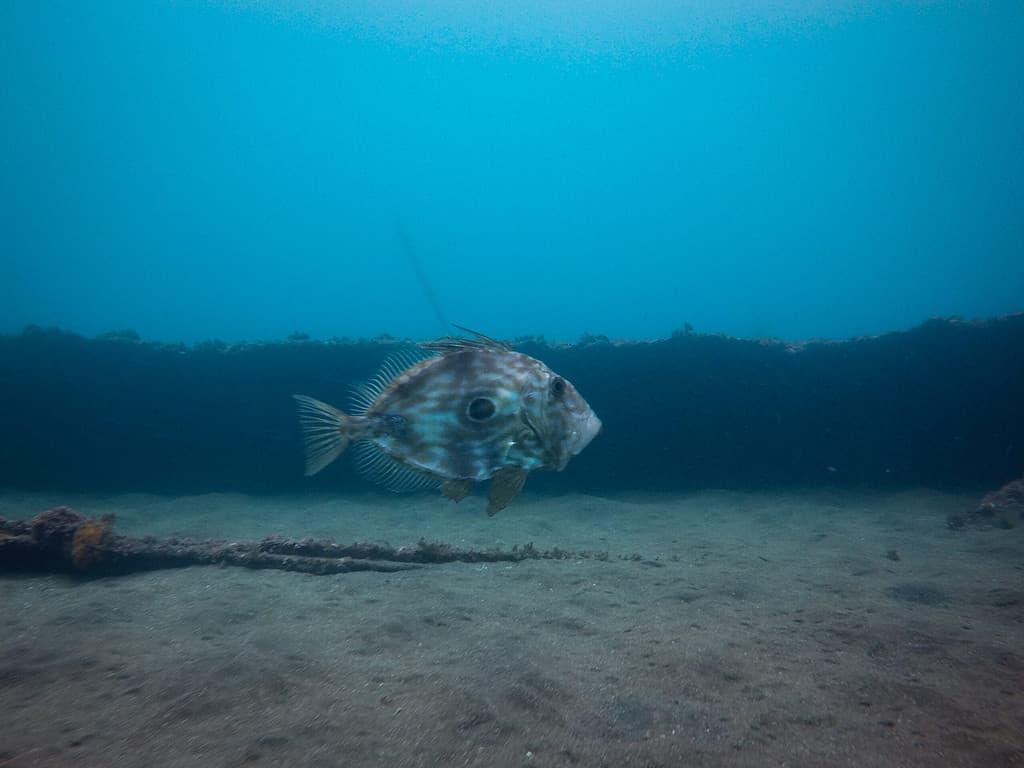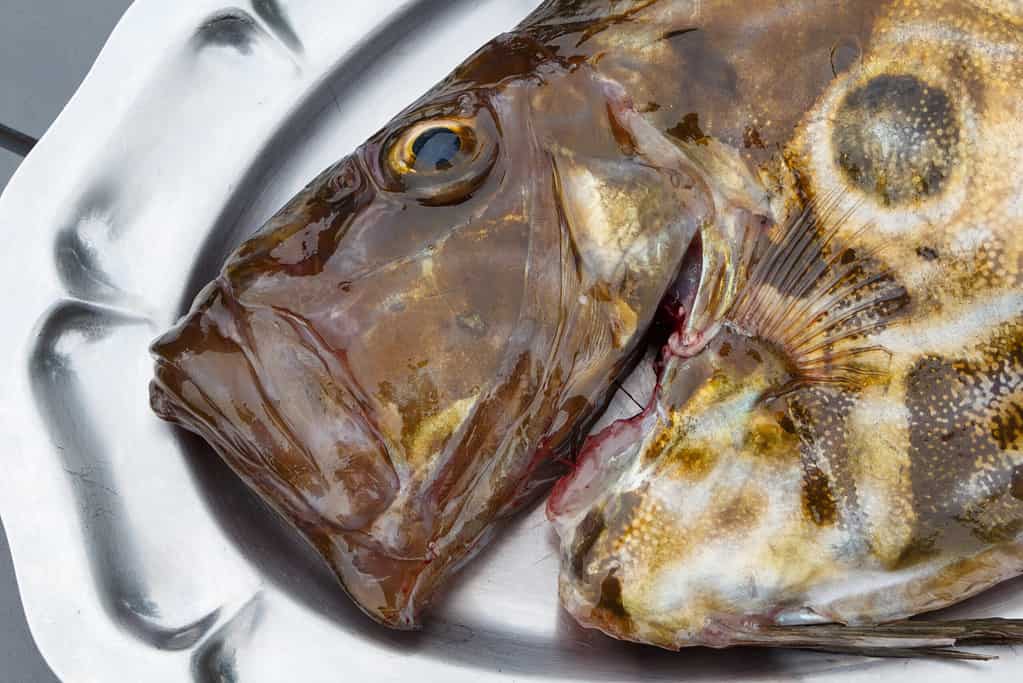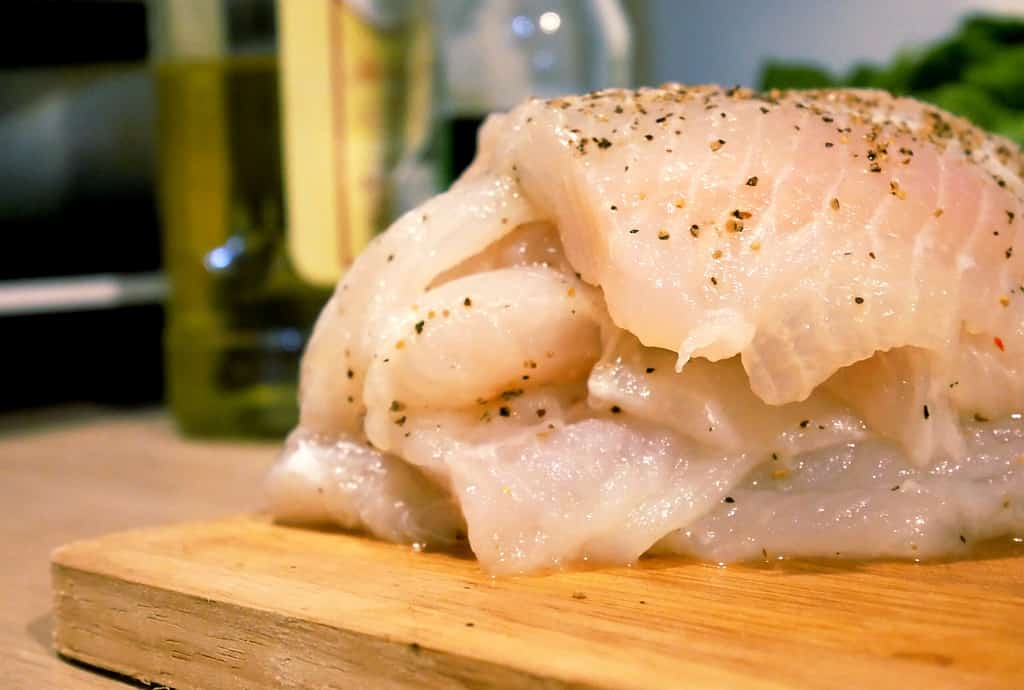Are you interested in learning how to catch John Dory? The John Dory fish has a unique yellow eyespot on their side that looks like a massive eye which they use as camouflage. In this article, we compile research and best practices for how to catch this unique fish.

Although John Dory is quite ugly, they are liked by many because they have a delicious texture and mildly sweet flavor. These species have odd-shaped mouths, and this article will help you understand how you can catch plenty of them effortlessly.
The Long Answer
John Dory has an odd-shaped mouth, so use a J hook, mullet, and mussels as bait to lure them.
Remember, John Dory has soft tissue that tears easily, so use a net to retrieve it. They are also sensitive, so set a depth by dropping your rig to the bottom without bait. When the sinker hits down, lift the reel to about two meters and set the rod. Next, you can pull your line up, place your mussel, and return it to the bottom. Avoid using circle hooks, and ensure you use smaller live baits to increase the chances of getting a whole John Dory.
Did you know? John Dory is important for their ecosystem as they control the population of smaller fish and keep everything in balance.
The fish has a large mouth, an extremely thin oval-shaped body, and over 10 formidable sharp spines that run along the top of its body. It also has false eyes or large black dots on either side that disorient predators.
John dories can live up to 12 years, growing about 60 cm and weighing 10 kg.
John Dory Facts
| Scientific Name | Zeus faber |
| Common Name(s) | John dory, jondori, St. Peter’s fish, dory fish |
| Family | Zeidae |
| Identifying Characteristics | Sharp spines and big dark spot on the side. Flat, round body shape, and bony fish with long spines on its dorsal fin. A john dory grows to a maximum size of 2 ft. |
| Depth Range | 5m to 360m |
| Habitat | It can be found in tropical and temperate latitudes of the world’s oceans, such as the North Atlantic as well as cooler parts of the South Pacific (except in the eastern Pacific and western Atlantic oceans). However, it is most common in the UK, New Zealand, South East Asia, and Australia |
| Limits | Check your local regulations |
| Largest Recorded | 11 lbs |
Where to Find John Dory
St. Peter’s fish are demersal and can be found in depths that are a few meters deep to several hundred meters deep. They are poor swimmers and remain around weed lines and kelp beds in warm waters. It usually remains near the seafloor over both hard and soft bottoms, where they also target its own species.
How to Catch John Dory

The best way to snag a john dory fish is via rigs such as the single hook dropper variety, but you can also use soft baits and cut-up bait. Target the fish in any area with a steady supply of baitfish, such as estuaries, harbors, and around reefs. If you prefer a rod, use a lightweight one that is flexible and sensitive at the tip but strong enough to reel in a dory.
Use J hooks for this whole fish, or you cannot hook its odd-shaped mouth. If you use live bait, you can use just about any species to lure this fish, such as mullet and spotties. When in doubt, try using mussels.
Fishing Tactics
- The smaller the live bait you use, the higher your chances of catching a john dory.
- Circle hooks will only turn into the bait resulting in missed strikes. To avoid this, hook the point in and up through the roof of the baitfish’s mouth. That way, a point will be left swinging free of any soft flesh.
Fishing Tips
- John Dory fish have soft mouths that tear easily. When you hook one, use a net to bring it into the boat to avoid damage.
- Set the depth by dropping the rig to the bottom without bait first, and when you feel the sinker hit, lift it to about 2m and set the rod in the holder. Then pull the line-up, pin the bait, and send it back to the bottom.
Seasons
The dory species are available year-round but are most abundant during May and June and between September and December. The quality of the meat of fish is the best during these months.
John Dory Recipe

Were you able to catch a john dory and want a meal out of it? Here’s a john dory recipe to try. If not, are you planning on buying one?
Did you know? John Dory is considered a good source of lean protein and has omega-3 fatty acids. They also tend to be low mercury fish, which makes them quality table fare.
When purchasing fresh John Dory, check that it has bright skin, clear bulging eyes, and red gills. You can just buy fillets and not the whole fish since its head accounts for half of its weight.

- Mix 50kg of softened butter with half a teaspoon of smoked paprika and set aside.
- Heat a large frying pan and add 1 tablespoon of olive oil to it.
- Season the john dory fillet with salt and add to the pan skin side down.
- Press the fillet firmly in the pan using a spatula for a minute to prevent curling.
- Cook for 2 minutes, then flip and add the prepared paprika butter to the pan.
- Baste the fish with the melting butter and cook for another 2 minutes when the fish is just cooked through, and the butter turns foamy.
- Remove the fillet from the pan and serve with lemon wedges.
Frequently Asked Questions
John dory has delicate white flesh and firm yet fine flakes with a slightly sweet flavor. It’s a delicious fish.
Yes. They have a flavor that will leave you craving more.
The fish is a poor swimmer, but it has a tube-like mouth that it extends to catch unsuspecting smaller fish once they inch close enough to them.




 Facebook
Facebook YouTube
YouTube








